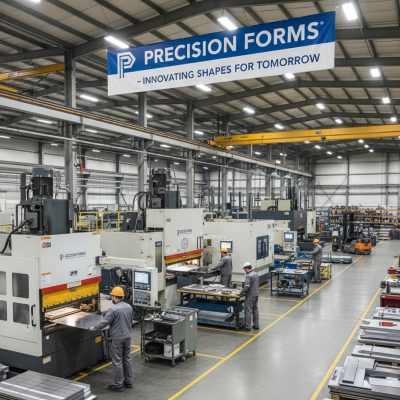Small and medium-sized businesses (SMBs) in the automotive manufacturing sector face unique challenges in maintaining efficient and reliable supply chains. Disruptions such as material shortages, geopolitical instability, or unexpected demand fluctuations can significantly impact operations. Building a resilient supplier network is critical to ensuring consistent production, minimizing risks, and staying competitive. This blog post outlines practical steps for SMB automotive manufacturers to create robust supplier networks that can withstand disruptions while supporting growth.
1. Diversify Your Supplier Base
Relying on a single supplier for critical components is a recipe for vulnerability. Diversifying your supplier base spreads risk and ensures continuity if one supplier faces issues.
Assess Current Dependencies: Identify components or materials sourced from a single supplier. Prioritize diversifying these to avoid bottlenecks.
Engage Multiple Suppliers: Source from at least two or three suppliers for key materials, ideally from different geographic regions to mitigate risks like natural disasters or trade restrictions.
Local and Global Balance: Combine local suppliers for faster delivery with global ones for cost efficiency. For example, source standard components locally while procuring specialized parts globally if needed.
2. Build Strong Supplier Relationships
Resilient networks depend on trust and collaboration. Strong relationships with suppliers foster better communication, flexibility, and problem-solving during disruptions.
Regular Communication: Schedule quarterly reviews or check-ins to discuss performance, forecasts, and potential challenges.
Collaborative Planning: Share production forecasts and demand projections to help suppliers prepare. This transparency can lead to better pricing or priority during shortages.
Supplier Development: Invest in your suppliers’ success by offering training or resources to improve their processes, ensuring they remain reliable partners.
3. Leverage Technology for Visibility
Technology provides real-time insights into your supply chain, enabling proactive decision-making.
Supply Chain Management Software: Use tools like Lasso to track supplier performance, inventory levels, and delivery timelines.
Data Analytics: Analyze historical data to predict potential disruptions or identify underperforming suppliers.
Digital Communication Platforms: Implement platforms like Slack or Microsoft Teams for seamless communication with suppliers, ensuring quick responses during crises.
4. Prioritize Supplier Vetting and Risk Assessment
Not all suppliers are created equal. Thorough vetting and ongoing risk assessment ensure you partner with reliable entities.
Due Diligence: Evaluate suppliers based on financial stability, production capacity, and compliance with automotive industry standards (e.g., IATF 16949).
Risk Mapping: Identify risks such as geographic vulnerabilities, single-source dependencies, or reliance on specific raw materials. Create contingency plans for high-risk suppliers.
Regular Audits: Conduct annual audits to ensure suppliers maintain quality and reliability standards.
5. Optimize Inventory Management
Balancing inventory levels is crucial to avoid overstocking while ensuring availability during disruptions.
Just-in-Time (JIT) with Buffers: While JIT reduces inventory costs, maintain strategic safety stock for critical components to cushion against delays.
Demand Forecasting: Use historical sales data and market trends to predict demand, adjusting inventory accordingly.
Vendor-Managed Inventory (VMI): Partner with key suppliers to manage inventory on your behalf, reducing your operational burden.
6. Foster Agility Through Flexible Contracts
Rigid contracts can limit your ability to adapt to changes. Flexible agreements allow you to pivot quickly.
Negotiate Flexibility: Include clauses that allow adjustments in order volumes or delivery schedules without heavy penalties.
Short-Term Contracts: For non-critical components, opt for shorter-term contracts to maintain flexibility in switching suppliers if needed.
Incentive Structures: Offer incentives for suppliers who can expedite deliveries or scale production during unexpected demand spikes.
7. Invest in Local and Regional Networks
While global suppliers may offer cost advantages, local and regional suppliers can reduce lead times and enhance resilience.
Map Local Options: Identify suppliers within a 100-200 mile radius to reduce transportation risks and costs.
Support Regional Ecosystems: Engage with local trade associations or automotive clusters to connect with reliable suppliers.
Dual-Sourcing Strategy: Combine local suppliers for quick turnaround with regional ones for scalability.
8. Plan for Contingencies
A robust contingency plan prepares you for worst-case scenarios.
Alternative Suppliers: Maintain a list of pre-vetted backup suppliers who can step in during disruptions.
Cross-Training: Train your team to work with alternative materials or components if primary ones are unavailable.
Scenario Planning: Conduct “what-if” exercises to simulate disruptions (e.g., a key supplier goes offline) and develop response strategies.
Conclusion
For SMB automotive manufacturers, building a resilient supplier network requires a strategic blend of diversification, technology, strong relationships, and proactive planning. By implementing these steps, businesses can mitigate risks, maintain production continuity, and position themselves for long-term success in a volatile industry. Start by assessing your current supplier network, identifying vulnerabilities, and taking incremental steps to strengthen it. A resilient supply chain isn’t built overnight, but with consistent effort, it becomes a competitive advantage.
Get the White Paper: Streamlining Procurement Processes for SMB Manufacturers
Get instant access to our white paper on Must-Know Procurement Tips for SMB Manufacturers by filling out the form below.
Get in Touch
Learn more about Lasso supply chain solutions for SMB manufacturers
Please complete the form and we will be in touch as soon as possible.







